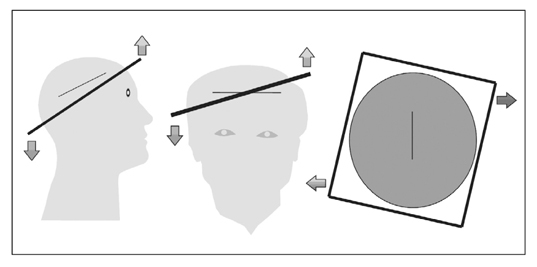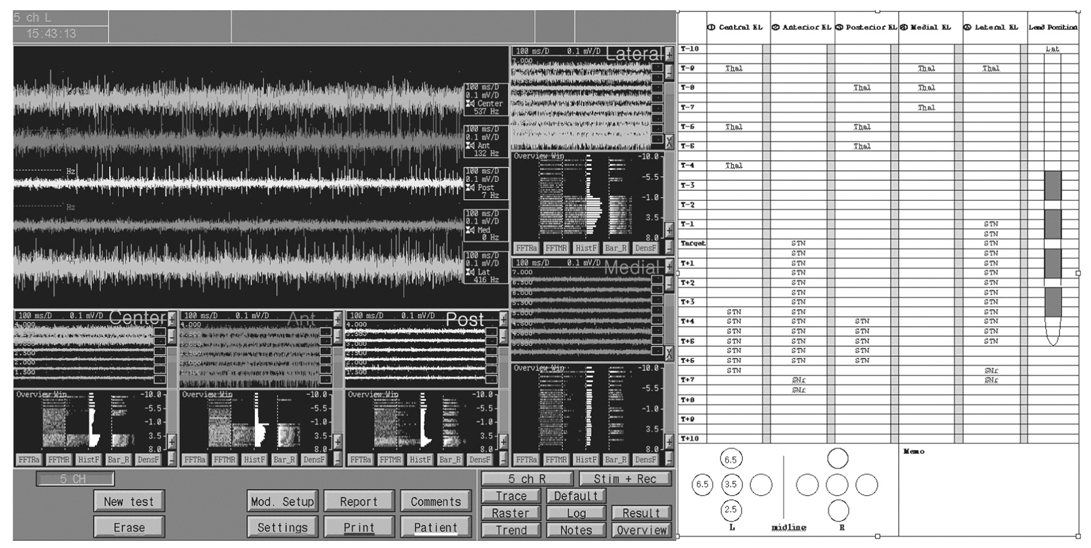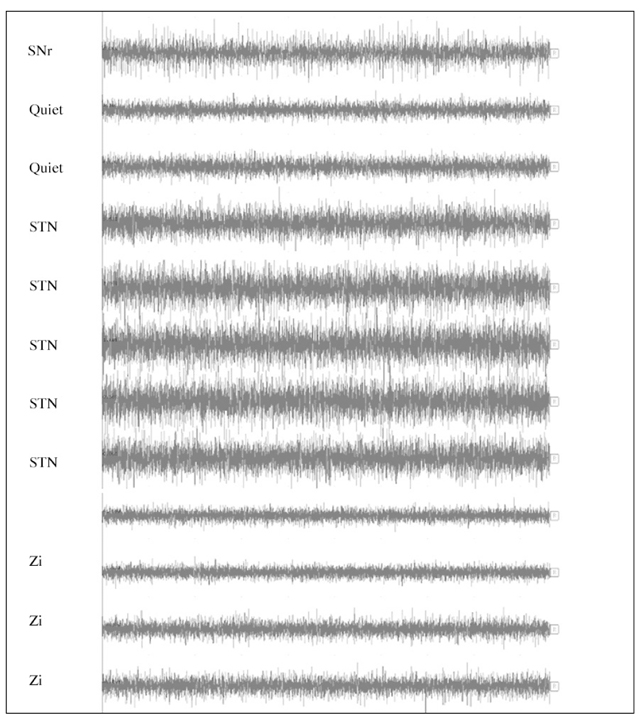J Korean Med Assoc.
2008 Feb;51(2):158-167. 10.5124/jkma.2008.51.2.158.
Surgical Treatment of Advanced Parkinson Disease
- Affiliations
-
- 1Department of Neurosurgery, Seoul National University College of Medicine, Korea. paeksh@snu.ac.kr
- KMID: 2185733
- DOI: http://doi.org/10.5124/jkma.2008.51.2.158
Abstract
- Parkinson disease (PD) is the second most common degenerative disease in the central nervous system following the Alzheimer's disease. Although the specific progressive degenerative change of dopamine-producing cells in the substantia nigra compacta has been well documented, neither the cause nor the underlying mechanism of degeneration has been identified. Long-term use of L-dopa causes dyskinesia, motor fluctuation, and other side effects, preventing the patients with advanced PD from further medication. Since deep brain stimulation (DBS) was introduced in the late 1980s by Dr. Benabid, it has become the standard surgical treatment for the patient with advanced PD who has developed drug-induced side effects or motor fluctuation after long-term use of L-dopa. Since DBS had been first reimbursed by the National Health Insurance System in January 2005 in Korea, many patients with advanced PD had a chance to be treated with DBS. The subthalamic nucleus (STN), globus pallidus interna (GPi), and thalamic VIM nucleus have been utilized as the target of DBS in the treatment of the patients with advanced PD. In this paper, the author briefly reviews the current methodology of surgical treatment of advanced PD, focusing on the STN DBS.
MeSH Terms
Figure
Reference
-
1. Nussbaum RL, Ellis CE. Alzheimer's disease and Parkinson's disease. N Engl J Med. 2003. 348:1356–1364.
Article2. Benabid AL, Benazzouz A, Hoffmann D, Limousin P, Krack P, Pollak P. Long-term electrical inhibition of deep brain targets in movement disorders. Mov Disord. 1998. 13:S119–S125.
Article3. Fraix V, Pollak P, Van Blercom N, Xie J, Krack P, Koudsie A, Benabid AL. Effect of subthalamic nucleus stimulation on levodopa-induced dyskinesia in Parkinson's disease. Neurology. 2000. 55:1921–1923.
Article4. Olanow CW, Brin MF, Obeso JA. The role of deep brain stimulation as a surgical treatment for Parkinson's disease. Neurology. 2000. 55:S60–S66.5. Pollak P, Fraix V, Krack P, Moro E, Mendes A, Chabardes S, Koudsie A, Benabid AL. Treatment results: Parkinson's disease. Mov Disord. 2002. 17:S75–S83.
Article6. Carpenter MB, editor. Core text of neuroanatomy. 1991. 4th ed. Baltimore: Williams & Wilkins;325–360.7. Deep-Brain Stimulation for Parkinson's Disease Study Group. Deep-brain stimulation of the subthalamic nucleus or the pars interna of the globus pallidus in Parkinson's disease. N Engl J Med. 2001. 345:956–963.8. Minguez-Castellanos A, Escamilla-Sevilla F, Katati MJ, Martin-Linares JM, Meersmans M, Ortega-Moreno A, Arjona V. Different patterns of medication change after subthalamic or pallidal stimulation for Parkinson's disease: target related effect or selection bias? J Neurol Neurosurg Psychiatry. 2005. 76:34–39.
Article9. Volkmann J, Allert N, Voges J, Weiss PH, Freund HJ, Strüm V. Safety and efficacy of pallidal or subthalamic nucleus stimulation in advanced PD. Neurology. 2001. 56:548–551.
Article10. Moro E, Scerrati M, Romito LM, Roselli R, Tonali P, Albanese A. Chronic subthalamic nucleus stimulation reduces medication requirements in Parkinson's disease. Neurology. 1999. 53:85–90.
Article11. Fraix V, Pollak P, Moro E, Chabardes S, Xie J, Ardouin C, Benabid AL. Subthalamic nucleus stimulation in tremor dominant parkinsonian patients with previous thalamic surgery. J Neurol Neurosurg Psychiatry. 2005. 76:246–248.
Article12. Thobois S, Mertens P, Guenot M, Hernier M, Mollion H, Bouvard M, Chazot G, Broussolle E, Sindou M. Subthalamic nucleus stimulation in Parkinson's disease: clinical evaluation of 18 patients. J Neurol. 2002. 249:529–534.13. Krack P, Batir A, Van Blercom N, Chabardes S, Fraix V, Ardouin C, Koudsie A, Limousin PD, Benazzouz A, LeBas JF, Benabid AL, Pollak P. Five-year follow-up of bilateral stimulation of the subthalamic nucleus in advanced Parkinson's disease. N Engl J Med. 2003. 349:1925–1934.
Article14. Romito LM, Scerrati M, Contarino MF, Iacoangeli M, Bentivoglio AR, Albanese A. Bilateral high frequency subthalamic stimulation in Parkinson's disease: long-term neurological follow-up. J Neurosurg Sci. 2003. 47:119–128.15. Rodriguez-Oroz MC, Zamarbide I, Guridi J, Palmero MR, Obeso JA. Efficacy of deep brain stimulation of the subthalamic nucleus in advanced Parkinson's disease 4 years after surgery: double blind and open label evaluation. J Neurol Neurosurg Psychiatry. 2004. 75:1382–1385.
Article16. Godinho F, Thobois S, Magnin M, Guenot M, Polo G, Benatru I, Xie J, Salvetti A, Garcia-Larrea L, Broussolle E, Mertens P. Subthalamic nucleus stimulation in Parkinson's disease: Anatomical and electrophysiological localization of active contacts. J Neurol. 2006. 253:1347–1355.
Article17. Benabid AL, Chabardes S, Seigneuret E. Deep-brain stimulation in Parkinson's disease: long-term efficacy and safety-What happened this year? Curr Opin Neurol. 2005. 18:623–630.
Article18. Bejjani BP, Dormont D, Pidoux B, Yelnik J, Damier P, Arnulf I, Bonnet AM, Marsault C, Agid Y, Phlippon J, Cornu P. Bilateral subthalamic stimulation for Parkinson's disease by using three-dimensional stereotactic magnetic resonance imaging and electrophysiological guidance. J Neurosurg. 2000. 92:615–625.
Article19. Benazzouz A, Breit S, Koudsie A, Pollak P, Krack P, Benabid AL. Intraoperative microrecordings of the subthalamic nucleus in parkinson's disease. Mov Disord. 2002. 17:S145–S149.
Article20. Krack P, Fraix V, Mendes A, Benabid AL, Pollak P. Postoperative management of subthalamic nucleus stimulation for Parkinson's disease. Mov Disord. 2002. 17:S188–S197.
Article







